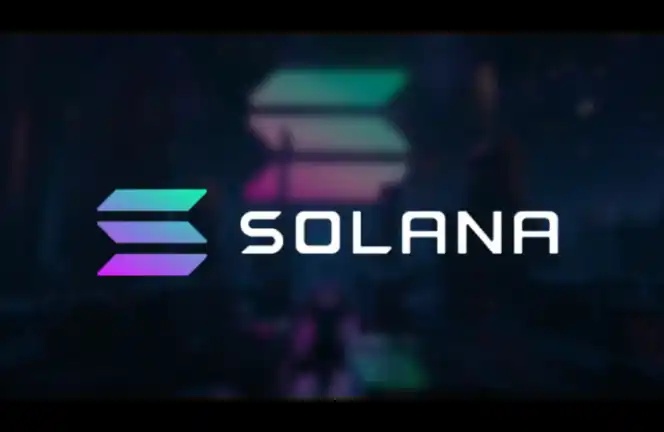Rate Cut Tomorrow or Rainfall? Key Week Setting the Stage for August Volatility | Trader's Watch
Most people are not yet aware that what is happening this week is setting the stage for August, perhaps determining the market direction for the entire summer.
Three major variables—the Fed interest rate decision, tech giant earnings reports, and the White House digital asset report—are all set to land simultaneously, and this is happening just before the historically weakest season for the crypto markets.
Traders find themselves at an awkward crossroads: should they position themselves early for a rebound, or prepare for a liquidity drain?
As stated in the latest report from 10xResearch: "Now, we are about to enter a critical moment: the most important events on the calendar—corporate earnings reports, the White House digital asset report, and the FOMC meeting—are all about to be settled before the summer arrives. Given the historically weak performance of the cryptocurrency market in August and September, traders find themselves in a dilemma." And their real-time indicators also suggest that today's trend will likely set the tone for the entire summer market.
What makes it even more complex is that the market is not just waiting for a rate cut answer, but for a directional signal. Will it shift to dovishness, continuing to drive Bitcoin and Ethereum higher? Or will it once again stand still, bringing a rain shower to the market?
Next, BlockBeats has compiled information on rate cuts, tariffs, and other macroeconomic factors, as well as traders' views on the upcoming market situation and mainstream coin trends, to provide some directional guidance for your trading this week.
Triple Macro Data Release This Week
From Wednesday to Friday, the U.S. will release three core economic data points—GDP, core PCE, and nonfarm payrolls. Together, they form the three benchmarks for this rate cutting cycle and will guide market sentiment almost as much as this week's Fed interest rate meeting.
July 30 (Wednesday): The initial estimate of Q2 GDP will be released, expected at +1.9%, a significant recovery from Q1's -0.5%. If the actual value further improves, it may be interpreted by the market as a continuation of the "soft landing," suppressing demand for an early rate cut instead.
July 31 (Thursday): The June core PCE inflation will be released, with a forecast of 2.7% year-on-year growth, which is the Fed's most closely watched inflation indicator. If slightly below expectations, it may strengthen market bets on a rate cut later this year; if unexpectedly higher, it could trigger short-term adjustments in risk assets.
August 1 (Friday): The July nonfarm payrolls data will be released, with an expected addition of 115,000 jobs and a slight rise in the unemployment rate to 4.2%. This will directly affect the Fed's assessment of whether the labor market has significantly cooled off and may be a key piece in determining policy direction.
Small Expectation of Rate Cut Tomorrow
The Federal Reserve will hold the FOMC monetary policy meeting on July 30 (Tuesday) to 31 (Wednesday), and the market widely expects the benchmark interest rate to remain unchanged in the 4.25%–4.50% range. The Polymarket prediction market shows that, as of July 29, the probability of the Fed keeping the rate unchanged is as high as 97%, while the probability of a 25 basis point rate cut is only 3%.
In other words, the market is not expecting an actual rate cut this time, but is waiting for a "rate cut signal" instead.
The "Fed megaphone" Nick Timiraos stated in his article in The Wall Street Journal: "Fed officials do believe that a rate cut will ultimately be needed, but they are not ready to do so this week." "Whether Powell will release clues about a September rate cut at the press conference will be the market's focus."
Several institutions have pointed out that the current U.S. policy environment is already extremely loose, and an early rate cut at this time may exacerbate the risk of asset bubbles, thereby weakening the Fed's ability to respond to future crises. At the same time, Trump's continued pressure on Powell may undermine the Fed's independence, making policy statements more politically sensitive.
According to reports from the AP News and MarketWatch, there is a three-way split within the Fed:
1. Hawkish camp (such as Michelle Bowman): Believes that a rate cut at this time is "premature," as inflation is not yet under control.
2. Dovish camp (such as Christopher Waller): Advocates for sending an early signal of easing and supports a "rate cut in July."
3. Majority of the wait-and-see camp: Emphasizes "continuing to observe more data," maintains a "data-driven" stance, and leans towards a rate cut at some point later this year.
This divergence may be brought to the forefront for the first time this week, becoming the source of intense market volatility. Whether to signal the "rate cut path" will be Powell's greatest test this week.
At the same time, this also means that even if the policy remains unchanged this week, any dovish hints in the statement or press conference will quickly be interpreted by the market as a signal of "pre-betting on a rate cut."
Market's Mild Response to Tariffs
Over the weekend, the Trump administration reached a new trade agreement with the European Union, averting a full-scale tariff war that was originally set to erupt on August 1.
However, this does not mean the market is excited. U.S. and European stocks had a subdued reaction: the S&P 500 index rose slightly, while the Stoxx 600 index actually fell. Both indices briefly strengthened during the trading day but gave up gains near the close.
Some economists believe: "The market is no longer focused on the EU-US trade agreement, but is in urgent need of another new catalyst."
Especially for Europe, the agreement is not considered "equitable." German Chancellor Friedrich Merz and French Minister for European Affairs Benjamin Addad have both publicly stated their hope for more open trade in the future. Meanwhile, Trump once again hinted on Monday: "It is highly likely that a unified tariff of 15% to 20% will be imposed on countries that have not signed a trade agreement with the United States."
This means that the market's previous greatest fear of the "30% cliff" has been eliminated. While 15% is still high, the predictability of the tariff policy itself is enough to be seen as a positive.
In response to this, trader The Investors Side (@InvestorsSide) believes: "This is by no means a clean handshake moment—what the market needs is not peace, but predictability. And that is exactly what this agreement brings in the short term."
In his view, compared to the levels until 2024, a 15% tariff is still high, but it eliminates the most explosive scenario, which is the sudden appearance of a 30% tariff cliff in August, a victory for risk sentiment.
At the same time, he also believes that the US and China will extend the tariff suspension deadline by another 90 days, confirming that the two major economies will reach an agreement over time, allowing the market to fully recover from the event in April that caused the stock market to plummet by over -20%.
At least on the tariff issue, traders can finally not encounter a "black swan" event and can refocus their attention on financial reports, interest rates, and the coin price itself.
$90 Billion Turnover, BTC Still Resilient
This month, Bitcoin has continued to hover near its all-time high, showing no signs of the typical market bubble. Implied volatility and funding rates (usually indicators of excessive speculation) have remained low, indicating that investors see this rally as more sustainable.
Most importantly, several technical indicators that were previously seen as "bubble signals" have not raised alarms: implied volatility (IV) remains low; the funding rate is moderately normal; leverage ratio has significantly decreased.
Multiple analysts have pointed out that since the launch of the spot Bitcoin ETF earlier this year, the market structure has quietly changed: "More and more traditional funds are starting to allocate Bitcoin through the ETF channel, no longer relying on contracts and leverage, and no longer following a retail-led chasing or selling chase pattern." This has made the market performance more robust, turning pullbacks into "buy" opportunities rather than "falling into traps."
The founder of the on-chain options platform Derive, Nick Forster, also expressed support for this shift, stating: "Mike Novogratz's prediction of $150,000 is no longer a fairy tale." "The probability currently given by the options market is: there is a 52% chance that Bitcoin will reach $150,000 by the end of the year."
Just this week, Bitcoin underwent a remarkable "massive transfer" event — 80,000 BTC, approximately $9 billion, were awakened, sold, and circulated from the Satoshi-era cold wallet. This transaction was led by Galaxy Digital, becoming the largest known heritage transfer and sale event in cryptocurrency history.
According to analysis by the account @TheInvestorsSide, while this transaction initially drew significant market attention, the actual price movement was far lower than expected: "Despite the enormous scale, BTC only briefly dropped below $115,000, and a few days later rebounded to $119,000."
What does this indicate? He believes, "Bitcoin barely withstood the $9 billion sell-off, which tells us everything we need to know. The natural market trajectory still points upward, and if BTC can overcome next week's macro resistance, my next short-term target is $130,000."
Renowned on-chain analyst and co-founder of Checkonchain, James Check (@Checkmatey), provided a more detailed retrospective: "This was a very traditional benign sell-off. Galaxy assisted clients in the transfer and published news on-chain using OP_RETURN."
More interestingly, he pointed out that Galaxy also "casually" returned a transaction output to the original address with 1 satoshi — widely interpreted as a "middle finger" to those trying to "legally seize these BTC."

However, from an on-chain perspective, Check focused more on structural capital flows: "This was not a simple wallet migration but a real ownership change. Whether sold OTC or on exchanges, on-chain transactions must be completed, and capital is thus repriced."

He emphasized that various metrics such as market capitalization, active addresses, and capital movements accurately reflected this event; the price only experienced a 3.5% retracement and quickly recovered.
Check pointed out that this is a typical retracement-rebound pattern that occurs in the middle of a bull market, known as the "Dali Llama Recovery Formation": "Even if it happens over the weekend, on-chain data and market response remain surprisingly robust, and Bitcoin will move higher."
ETH Surges to $4000
According to the latest options market data: Bitcoin December implied volatility: only 30%, indicating investors expect a stable upward path; Ethereum December implied volatility: up to 60%, nearly twice that of Bitcoin.
This seems to show that Bitcoin is more like on a steady rising main uptrend wave, while Ethereum may go through a more intense, nonlinear eruption.
ETH's price action also confirms this: the main focus of the past two weeks has been ETH's sharp rise, surging from $2600 to nearly $3800. ETHBTC remained low as Bitcoin repeatedly broke historical highs until $123,000, after which it was Ethereum's turn. It surged from $3000 to $3800 in 5 days, a 27% increase with very limited downside.

According to @TheInvestorsSide: "Ethereum ETF has been surpassing Bitcoin ETF in daily inflows for 6 consecutive days, creating a historical record of 16 consecutive days of net inflows."
He bluntly stated that this is a typical Wall Street sentiment refill: "After months of neglect, Wall Street is embracing ETH again, making me believe we will see ETH break $5,000 in the medium term."
Founder of on-chain options platform Derive, Nick Forster, provided a more direct prediction: "The probability of Ethereum rising to $6,000 by the end of the year has surged from less than 7% in early July to over 30%." He sees this as a "large-scale repricing" of tail risk.
This aligns with the assessment of Capriole Fund founder Charles Edwards: he believes ETH will hit a new all-time high in the next "6 to 12 months."
Analyst Viktor revealed another layer of capital logic—ETH's capital flywheel is accelerating this process:
The most notable examples are Sharplink Gaming and Bitmine led by Tom Lee. Sharplink Gaming saw its stock price nearly quintuple within two weeks in early July. The team took advantage of this surge to sell newly issued stocks and used the proceeds to buy ETH in a reverse manner, with the highest weekly buy-in amount reaching $4 billion. Currently, its mNAV is 2.3, and if the valuation remains high, this "sell stocks, buy coins" behavior is expected to continue. Bitmine completed a $250 million private placement in just 10 days and publicly announced that its ETH holdings surpassed $1 billion. It is continuing to fund acquisitions of ETH through ATM (issuing new shares at market price).
"These copycat hedge fund companies, through the price increase of stocks, financing, and coin purchase, are creating a self-stimulating fund path," Viktor added. The strength of $ETH has naturally driven the rise of some 'ETH test coins,' especially in the DeFi sector, with $CRV, $FXS, and $CVX all doubling in value. $ENA has also skyrocketed from the bottom, with a 125% increase, but the final stage of the rise may be due to the advance announcement of the establishment of the $ENA fund company. The company is named StablecoinX, with the trading code $USDE. Once again, it is strongly emphasized to exercise caution when purchasing shares of copycat fund companies.
In his latest internal report titled "The Alchemy of 5%," Bitmine Chairman and Fundstrat co-founder Tom Lee explicitly stated: "Wall Street generally believes that Ethereum will be one of the most important macro trades in the next decade."
His prediction for BTC is that it will reach $250,000 by the end of 2025. He has set an ETH target price of $60,000, with the following reasons: ETH is the main platform for Web3, DeFi, stablecoin issuance, and staking; spot ETFs have improved the entry path; fund companies have provided structural buying pressure; and inflation and macro cycles will boost the premium of crypto assets.
In his view, this round of the market is not a traditional "speculative bull market" but an institutional-grade primary uptrend cycle shaped by ETFs, fund companies, and on-chain liquidity.
Trader Entry into SUI
The token has a daily trading volume of $4.7 billion, a market capitalization of $99.8 billion, is starting to show an upward trend, and has further potential for growth. As SUI recovers from the market pressure typically seen during long-term periods of volatility, traders are reevaluating it.
Renowned crypto analyst Ali Martinez analyzed that the SUI token has broken out of a symmetrical triangle formation on the daily chart — a classic technical pattern that usually precedes significant price swings. The breakout of a symmetrical triangle pattern is typically interpreted as a shift from market uncertainty to clear directional momentum, which in this case is to the upside.

Ali Martinez mentioned that as long as the investment flow continues, a confirmed breakout above the $4.50 resistance level could potentially lead the price towards $8. He also explained that the triangle formation signals the end of a consolidation phase and the beginning of a trend reversal.
According to Reuters, institutional investment firm Canary Capital has submitted the first spot SUI ETF application to the U.S. SEC. The filing indicates that if approved, SUI would become one of the first mainstream Layer-1 coins to receive a traditional ETF pathway. This process is seen as a key precursor to driving institutional funds into SUI.
Welcome to join the official BlockBeats community:
Telegram Subscription Group: https://t.me/theblockbeats
Telegram Discussion Group: https://t.me/BlockBeats_App
Official Twitter Account: https://twitter.com/BlockBeatsAsia




 Forum
Forum Finance
Finance
 Specials
Specials
 On-chain Eco
On-chain Eco
 Entry
Entry
 Podcasts
Podcasts
 Activities
Activities
 OPRR
OPRR







